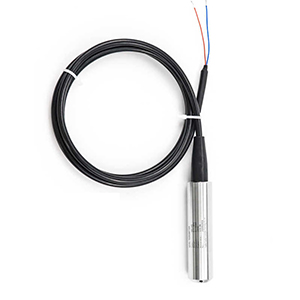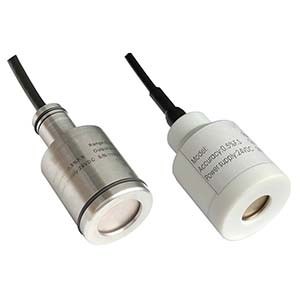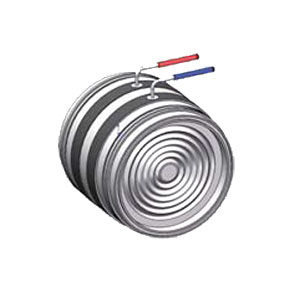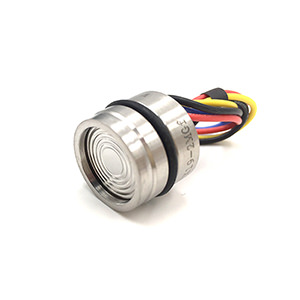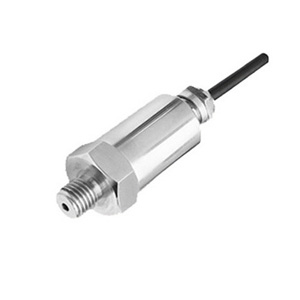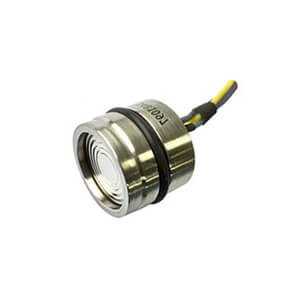What does corrosive media mean?
Corrosive media refers to substances that can cause damage or degradation to materials, surfaces, or structures through chemical reactions. These substances can include liquids, gases, or even solids that have the potential to corrode or wear away materials over time. In the context of pressure sensors, corrosive media usually refers to liquids or gases that can negatively affect the performance, accuracy, or lifespan of the sensor by causing chemical reactions with the sensor’s materials.
Examples of corrosive media include strong acids, such as hydrochloric acid and sulfuric acid, strong bases like sodium hydroxide, and some salts, like sodium chloride, in high concentrations. These substances can cause material like metals, plastics, or elastomers like O-Rings to corrode, weaken, or deteriorate, leading to potential failure or loss of performance.
In the field of pressure sensing, working with corrosive media can present challenges, as the sensor must be designed and constructed with materials that can withstand the corrosive effects of the media. This often involves selecting materials for the sensor housing, sensing element, and seals that are resistant to corrosion and compatible with the specific media being measured. Common pressure sensor materials used for corrosive media applications include Stainless steel (SS316, SS304), Hastelloy, and other corrosion-resistant alloys, as well as certain plastics and elastomers.
What risks and how the corrosive media can bring to the pressure sensor
Corrosive media can pose several risks to pressure sensors, as they can affect the sensor’s performance, accuracy, and lifespan. Here are some of the risks and ways that corrosive media can impact pressure sensors:
Material degradation:
Corrosive media can cause chemical reactions with the materials used in the sensor, leading to corrosion or wear. This degradation can weaken the sensor housing, sensing element, or seals, which may result in leaks, compromised structural integrity, or even sensor failure.
When exposed to corrosive media, a pressure sensor can cause chemical reactions with the materials, leading to various types of corrosion, such as pitting, crevice corrosion, or stress corrosion cracking.
For example, stainless steel 316L, which has a PREN (Pitting Resistance Equivalent Number) of around 24, may still be susceptible to chloride-induced pitting in highly corrosive environments, while more resistant alloys like Hastelloy C276, with a PREN of over 50, offer greater protection.
To address these risks, it is essential to choose pressure sensors with appropriate materials and designs for the specific application. Check details of material choosing of pressure sensor
Reduced accuracy:
Corrosive media can impact the accuracy of a pressure sensor as it damages the sensing element. In a capacitive sensor, for instance, the dielectric layer between the sensing diaphragm and electrode could be compromised, resulting in a change in capacitance and reduced accuracy. Due to corrosion-induced damage, a 0.1% FS (Full Scale) accuracy sensor might degrade to a 1% FS or worse accuracy level.
The corrosive effects on the sensing element can change its properties, affecting its ability to measure pressure accurately. For example, if a corrosive media reacts with a strain gauge-based sensing element, it could alter the gauge’s electrical resistance, leading to inaccurate pressure readings.
Shortened lifespan:
The constant exposure to corrosive media can accelerate the wear and degradation of the sensor materials, resulting in a shorter operational lifespan. This means the sensor may need to be replaced more frequently, increasing maintenance costs and downtime.
A typical pressure sensor might have a lifespan of 10 years in non-corrosive conditions. Still, exposure to aggressive media could shorten its life to just 1-3 years, depending on the specific chemicals and concentrations involved.
Contaminated media:
In some cases, the corrosion of the sensor materials can lead to contamination of the media being measured. This is particularly concerning in applications where purity is critical, such as pharmaceutical or food processing industries.
As a pressure sensor corrodes, the corrosion products can contaminate the measured media, which can be problematic in industries that require high purity levels, such as semiconductor manufacturing or pharmaceuticals. For example, a particle count increase from 1,000 particles (0.1 microns) per mL to 10,000 particles per mL due to corrosion could negatively impact the product quality or cause contamination issues.
Safety risks:
Leaks or sensor failures due to corrosion can pose safety risks, especially in high-pressure systems or when dealing with hazardous media. A damaged sensor could lead to the release of the media, potentially causing harm to personnel or equipment.
Corrosion-induced pressure sensor failures can lead to hazardous situations, including leaks or ruptures, which pose risks to personnel, equipment, and the environment. In a worst-case scenario, a corroded pressure sensor in a high-pressure hydrogen gas system could fail, resulting in a leak and increasing the risk of a catastrophic explosion.
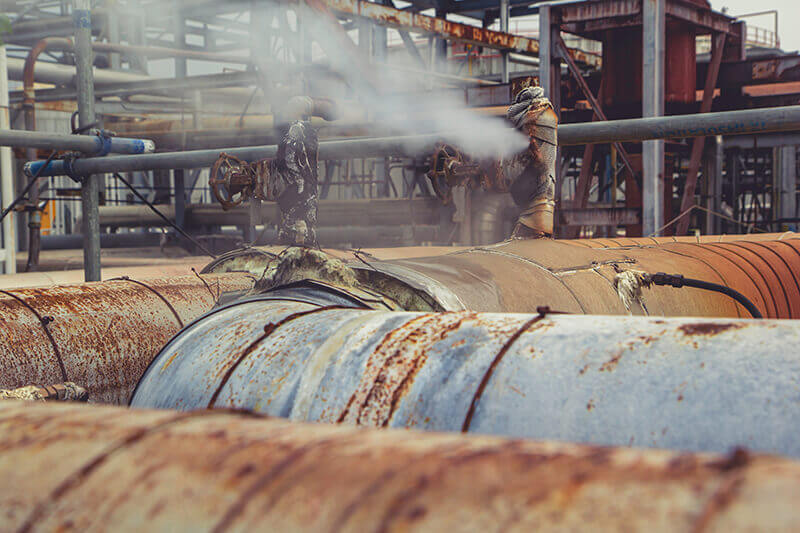
Measurement options for pressure sensors in corrosive media
Depending on the application’s requirements, measurement options for pressure sensors in corrosive media include both absolute and gauge pressure measurements. Here’s an overview of each type and why differential pressure measurement might not be as standard in corrosive media applications:
Absolute pressure sensors:
These sensors measure pressure relative to a perfect vacuum (0 psi or 0 bar). Absolute pressure sensors are often used in applications where the pressure needs to be measured regardless of atmospheric pressure changes, such as vacuum processes, sealed systems, or altitude measurements. An absolute pressure sensor with a corrosion-resistant diaphragm in corrosive media applications can ensure accurate and reliable measurements. For example, measuring the pressure inside a chemical reactor containing corrosive gases would require an absolute pressure sensor to account for any changes in atmospheric pressure.
Gauge pressure sensors:
Gauge pressure sensors measure pressure relative to atmospheric pressure. These sensors are commonly used in applications where the focus is on the difference between the process pressure and the ambient atmospheric pressure. Selecting a gauge pressure sensor with appropriate materials and design features in corrosive media applications can ensure accurate and reliable measurements. For instance, a gauge pressure sensor could be used to monitor the pressure in a storage tank containing a corrosive liquid, where the pressure of interest is the difference between the liquid’s pressure and the atmospheric pressure.
The reason differential pressure sensors might not be as common in corrosive media applications is that they measure the pressure difference between two points in a system. In many corrosive media applications, the focus is on measuring the pressure of the corrosive substance itself, rather than comparing it to another point within the system.
However, there might still be some applications where differential pressure sensors are used in corrosive media, especially if there is a need to measure the pressure difference across a membrane or a filter. In such cases, it’s essential to choose a differential pressure sensor designed to handle corrosive media, ensuring that both the high and low-pressure sides of the sensor are resistant to the corrosive substances present in the application.
Which technology is better for pressure sensors in corrosive media
Piezoresistive pressure sensors:
Piezoresistive sensors are based on the principle that the electrical resistance of material changes under mechanical stress. These sensors often use silicon, ceramic, or metal strain gauges. Due to their better chemical resistance, ceramic or metal (such as stainless steel) strain gauges are more suitable for corrosive media applications. Ceramic pressure sensors, in particular, offer excellent corrosion resistance and are widely used in the chemical, petrochemical, and wastewater treatment industries.
Capacitive pressure sensors:
Capacitive sensors measure pressure by detecting changes in capacitance between two electrodes. These sensors typically have a diaphragm made from corrosion-resistant materials like ceramic or stainless steel. The diaphragm separates the electrodes and deforms under pressure, altering the capacitance. Capacitive pressure sensors offer good accuracy and can be used in various corrosive media applications, such as chemical processing or pharmaceutical manufacturing.
Optical pressure sensors:
Optical pressure sensors measure pressure by detecting light intensity, wavelength, or polarization changes. These sensors typically use a diaphragm made from corrosion-resistant materials like glass or sapphire. Optical pressure sensors are immune to electromagnetic interference and can be used in applications with high temperatures or harsh chemical environments, such as in chemical reactors or semiconductor manufacturing processes.
Each technology has its advantages and disadvantages, depending on the specific application requirements. When selecting a pressure sensor for corrosive media applications, it’s essential to consider factors such as the type and concentration of the corrosive substances, the operating temperature and pressure range, the required accuracy, and the overall cost.
For example,
-
Suppose you need a pressure sensor for a chemical reactor involving high temperatures and aggressive chemicals. In that case, an optical pressure sensor might be the best choice due to its immunity to electromagnetic interference and high-temperature capabilities.
-
If you need a pressure sensor for a wastewater treatment plant with moderate chemical exposure and temperature, a piezoresistive ceramic pressure sensor would likely be more cost-effective while still offering good corrosion resistance and accuracy.
Check detail about pressure sensing technology
| Technology | Pressure Range | Accuracy | Working Temperature | Power Supply | Output Signal | MOC | Typical Use Cases | Limitations | Pros | Cons |
|---|---|---|---|---|---|---|---|---|---|---|
| Silicon Piezoresistive | 0-10,000 psi (0-1000 bar) | 0.1%-0.25% FS | -40°C to 125°C | 8-30 VDC | 4-20mA, 0-5V, 0-10V | Silicon, stainless steel | HVAC, automotive, manufacturing | Temperature sensitivity, moderate accuracy | Cost-effective, good stability | Moderate accuracy, temperature sensitivity |
| Ceramic Piezoresistive | 0-10,000 psi (0-500 bar) | 0.1%-0.5% FS | -40°C to 85°C | 8-30 VDC | 4-20mA, 0-5V, 0-10V | Ceramic, stainless steel | Chemical, food processing | Limited high-temperature performance | Excellent corrosion resistance, stable | Limited high-temperature performance |
| Capacitive | 0-10,000 psi (0-689 bar) | 0.03%-0.1% FS | -40°C to 125°C | 8-30 VDC | 4-20mA, 0-5V, 0-10V | Ceramic, stainless steel | Semiconductor, pharmaceutical | Sensitivity to humidity, dust, and contaminants | High accuracy, long-term stability | Sensitive to humidity, dust, and contaminants |
| Optical | 0-50,000 psi (0-3,447 bar) | 0.01%-0.1% FS | -40°C to 150°C | 3.3-5 VDC (typical) | Digital or analog signal | Sapphire, stainless steel | Aerospace, medical | Higher cost, complex signal processing | Immune to EMI, high accuracy | Higher cost, complex signal processing |
| MEMS | 0-10,000 psi (0-689 bar) | 0.1%-1% FS | -40°C to 125°C | 8-30 VDC | 4-20mA, 0-5V, 0-10V | Silicon, stainless steel | Consumer electronics, IoT | Limited high-pressure capabilities, susceptible to shock and vibration | Miniaturization, low power consumption | Limited high-pressure capabilities, susceptible to shock and vibration |
| Piezoelectric | 0-20,000 psi (0-1,379 bar) | 0.1%-0.5% FS | -40°C to 85°C | 5-30 VDC | Charge or voltage | Quartz, ceramic | Dynamic pressure, ultrasonics | Not suitable for static pressure measurements, temperature sensitivity | Excellent for dynamic pressure, fast response | Not suitable for static pressure measurements, temperature sensitivity |
What special attention needs to pay when measuring pressure for corrosive media
To handle corrosive media while measuring their pressure, consider the following steps:
Material selection:
Select materials that are resistant to the specific corrosive media. Common materials include stainless steel (e.g., 316L, Hastelloy), ceramic (e.g., Al2O3, ZrO2), and certain plastics (e.g., PTFE, PEEK). Consult a corrosion resistance chart or seek expert advice to determine the most suitable material for your application.
Sensor selection:
Choose a pressure sensor with a suitable sensing technology for corrosive media, such as ceramic piezoresistive or capacitive sensors. These sensors are known for their excellent corrosion resistance, stability, and reliability. Verify the sensor’s specifications, such as pressure range, accuracy, and temperature range, to ensure compatibility with your application.
Pressure seal:
Ensure that the pressure sensor has appropriate seals to prevent the corrosive media from leaking into the sensor or escaping the system. Common sealing solutions include O-rings or diaphragm seals made from corrosion-resistant materials, such as Viton, EPDM, or FFKM.
Sensor installation:
Install the pressure sensor at an appropriate location in the system to minimize the impact of temperature fluctuations, vibrations, and other factors that could influence the sensor’s performance. Consider using isolation valves to allow safe removal or maintenance of the sensor without disrupting the process.
Calibration and maintenance:
Regularly calibrate the pressure sensor to ensure accurate readings. Perform periodic inspections and maintenance to identify signs of wear, corrosion, or other issues that may affect the sensor’s performance.
Safety considerations:
Implement safety measures, such as pressure relief valves or rupture disks, to prevent over-pressurization and potential damage to the system. Additionally, follow proper handling and disposal procedures for corrosive media to ensure the safety of personnel and the environment.
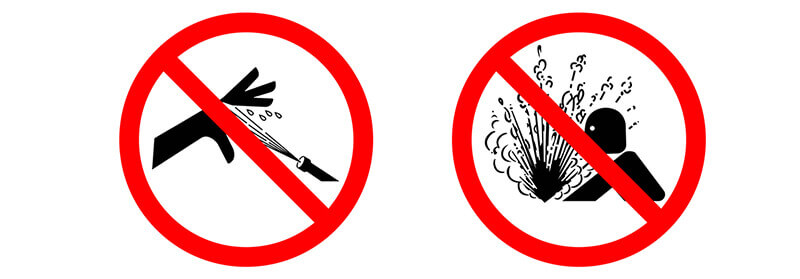
What methods are effective measure pressure for corrosive media
Indirect measurement methods:
- Diaphragm seals: A diaphragm seal, made of corrosion-resistant material, is mounted between the process media and the pressure sensor. The diaphragm is filled with a non-corrosive, incompressible fluid (fill fluid) that transfers the pressure to the sensor. The fill fluid should have a low thermal expansion coefficient and be compatible with the diaphragm material.
- Capillary tubes: Capillary tubes can be used to distance the pressure sensor from the process media, minimizing direct exposure to high temperatures or corrosive substances. The tube length should be carefully considered to avoid excessive temperature effects and pressure signal dampening.
Wireless pressure sensors:
- Frequency range: Common frequency ranges for wireless pressure sensors are 2.4 GHz (ISM band) or 900 MHz (for some regions). The choice of frequency affects signal range, penetration, and power consumption.
- Battery life: Battery life is critical for wireless pressure sensors. Long-lasting batteries or energy-harvesting technologies can help extend the operational life of the sensor.
- Signal range: The wireless range depends on the environment and frequency. In general, ranges can vary from tens to hundreds of meters.
Customized solutions:
- Material compatibility: Work with a sensor manufacturer to select the best materials for your specific corrosive media, such as special alloys, ceramics, or advanced polymers.
- Sensor configuration: Customized pressure sensors can be designed with specific pressure ranges, output signals, or other features tailored to your application requirements.
- Sensor duplication: Installing two or more pressure sensors in parallel ensures that if one sensor fails or becomes affected by the corrosive media, the other sensor(s) can still provide accurate pressure readings.
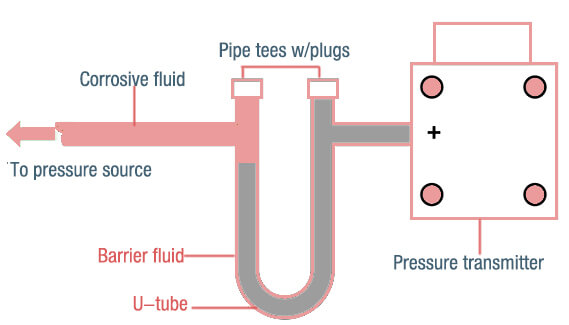
Diaphragm material and coating chosen for pressure sensor in corrosive media
The choice of diaphragm material and coating for pressure sensors in corrosive media applications is crucial to ensure accurate and reliable measurements while maintaining the sensor’s durability. Here are some common diaphragm materials and coatings, along with industry examples:
Stainless steel:
Stainless steel is often used for mildly corrosive applications, such as oil and gas, water treatment, and some chemical processes. The most common stainless steel grades used for diaphragms are 316L and 316Ti, which offer good corrosion resistance. However, they may not be suitable for highly corrosive environments. In a water treatment plant, you might choose a pressure sensor with a 316L stainless steel diaphragm for monitoring the pressure of a mildly corrosive liquid.
- Stainless Steel:
- Technical Data: SS316, SS316L L, 17-4PH, SS304
- Type: Metallic, ferrous
- Working Temperature: -196°C to 815°C
- Industry: Chemical, petrochemical, pharmaceutical, food and beverage, marine
- Media: Water, steam, oil, gases, chemicals
- Case: Food processing equipment, chemical containment vessels
- Pros: Corrosion-resistant, good mechanical properties, affordable
- Cons: Limited resistance to extreme environments, not suitable for some corrosive chemicals
- Limitations: Corrosion resistance decreases with increasing temperature and chemical concentration
Hastelloy:
Hastelloy is a family of nickel-based alloys that provide excellent corrosion resistance, making them suitable for highly corrosive environments, such as chemical and petrochemical industries. Hastelloy C276 is a popular choice for diaphragm material in corrosive media applications. You might select a pressure sensor with a Hastelloy C276 diaphragm in a chemical plant handling highly aggressive acids to ensure reliable and accurate measurements.
- Hastelloy:
- Technical Data: C-276, C-22, B-2
- Type: Nickel-based superalloy
- Working Temperature: -184°C to 1093°C
- Industry: Chemical processing, aerospace, pharmaceutical, waste treatment
- Media: Acids, seawater, chlorine gas, hydrogen sulfide
- Case: Reactors, heat exchangers, chemical storage tanks
- Pros: Excellent corrosion resistance, high-temperature strength
- Cons: Expensive, difficult to fabricate
- Limitations: Not suitable for high-stress applications
Monel:
Monel is another nickel-based alloy known for its corrosion resistance, particularly against saltwater and certain acids. Monel 400 is a common choice for pressure sensor diaphragms in marine and offshore applications. You might opt for a pressure sensor with a Monel 400 diaphragm to monitor pressure in a seawater desalination system.
- Monel:
- Technical Data: Monel 400, Monel K-500
- Type: Nickel-copper alloy
- Working Temperature: -196°C to 648°C
- Industry: Marine, chemical, oil and gas, petrochemical
- Media: Seawater, hydrofluoric acid, salt solutions, non-oxidizing acids
- Case: Valves, pumps, shafts in seawater applications
- Pros: Good corrosion resistance, resistant to biofouling
- Cons: Expensive, less corrosion resistant than Hastelloy
- Limitations: Poor resistance to oxidizing environments
Ceramic:
Ceramic diaphragms offer excellent chemical resistance and are suitable for highly corrosive and abrasive media, often used in chemical, pharmaceutical, and food industries. Alumina (Al2O3) and zirconia (ZrO2) are common ceramic materials used for diaphragms.
You might choose a pressure sensor with an alumina ceramic diaphragm in a pharmaceutical manufacturing process involving aggressive chemicals.
- Ceramic:
- Technical Data: Alumina, zirconia
- Type: Non-metallic, inorganic
- Working Temperature: -196°C to 1000°C
- Industry: Semiconductor, medical, automotive
- Media: Corrosive liquids and gases, abrasive materials
- Case: Abrasive media flow measurement, semiconductor processing
- Pros: Chemically inert, wear-resistant, electrically insulating
- Cons: Brittle, poor thermal shock resistance
- Limitations: Not suitable for high impact or high-stress applications
Tantalum:
Tantalum is a highly corrosion-resistant metal that can withstand many aggressive chemicals, making it an excellent choice for diaphragm material in extremely corrosive environments. However, it is expensive and less commonly used than other materials. You might select a pressure sensor with a tantalum diaphragm for maximum corrosion resistance in a chemical process handling extremely aggressive acids.
- Tantalum:
- Technical Data: Tantalum, Ta2.5W, Ta10W
- Type: Refractory metal
- Working Temperature: -196°C to 3000°C
- Industry: Chemical processing, aerospace, medical
- Media: Highly corrosive acids, alkalis
- Case: High-temperature chemical reactors, aerospace components
- Pros: Exceptional corrosion resistance, high melting point
- Cons: Very expensive, difficult to process
- Limitations: Not suitable for high-stress applications, high costs may limit use
| Material | Technical Data | Type | Working Temperature | Suitable Industries for Pressure Sensors | Suitable Media | Case | Pros | Cons | Limitations |
|---|---|---|---|---|---|---|---|---|---|
| Stainless | AISI 316L, 17-4PH, SS304 SS16 | Metallic, ferrous | -196°C to 815°C | Chemical, petrochemical, pharmaceutical, food and beverage, marine | Water, steam, oil, gases, chemicals | Food processing equipment, chemical containment vessels | Corrosion-resistant, affordable, good mechanical properties | Limited resistance to extreme environments, not suitable for some corrosive chemicals | Corrosion resistance decreases with increasing temperature and chemical concentration |
| Hastelloy | C-276, C-22, B-2 | Nickel-based superalloy | -184°C to 1093°C | Chemical processing, aerospace, pharmaceutical, waste treatment | Acids, seawater, chlorine gas, hydrogen sulfide | Reactors, heat exchangers, chemical storage tanks | Excellent corrosion resistance, high-temperature strength | Expensive, difficult to fabricate | Not suitable for high-stress applications |
| Monel | Monel 400, Monel K-500 | Nickel-copper alloy | -196°C to 648°C | Marine, chemical, oil and gas, petrochemical | Seawater, hydrofluoric acid, salt solutions, non-oxidizing acids | Valves, pumps, shafts in seawater applications | Good corrosion resistance, resistant to biofouling | Expensive, less corrosion resistant than Hastelloy | Poor resistance to oxidizing environments |
| Ceramic | Alumina, zirconia | Non-metallic, inorganic | -196°C to 1000°C | Semiconductor, medical, automotive, harsh environments | Corrosive liquids and gases, abrasive materials | Abrasive media flow measurement, semiconductor processing | Chemically inert, wear-resistant, electrically insulating, excellent for high accuracy pressure sensors | Brittle, poor thermal shock resistance | Not suitable for high impact or high-stress applications |
| Tantalum | Tantalum, Ta2.5W, Ta10W | Refractory metal | -196°C to 3000°C | Chemical processing, aerospace, medical, highly corrosive environments | Highly corrosive acids, alkalis | High-temperature chemical reactors, aerospace components | Exceptional corrosion resistance, high melting point, suitable for aggressive media | Very expensive, difficult to process | Not suitable for high-stress applications, high costs may limit use |
Wrap up
We emphasized the importance of material compatibility, temperature range, chemical concentration, installation, maintenance, sensor lifespan, and cost for corrosive media applications. The choice of diaphragm material and coatings is crucial to ensure the sensor’s performance and durability in these challenging environments.

